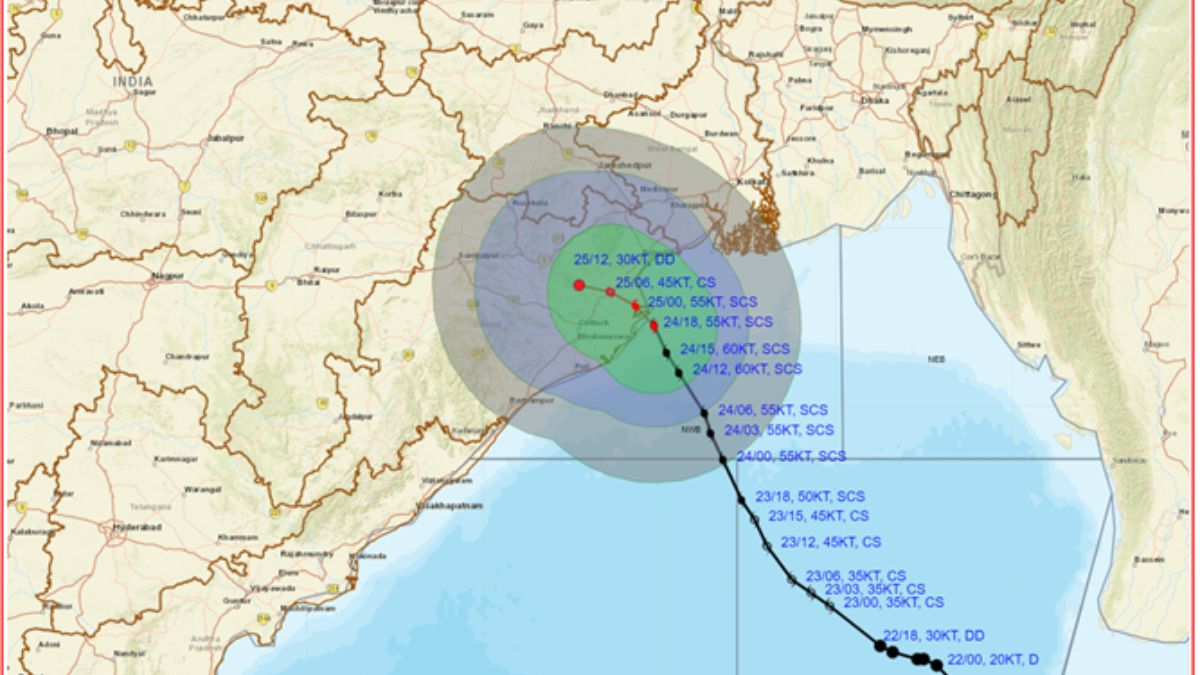Cyclone Dana ravaged parts of West Bengal and Odisha, leaving a trail of disruption and requiring extensive evacuation efforts. The severe cyclonic storm made landfall late Thursday, October 24th, bringing with it intense winds, heavy rainfall, and significant disruption to transportation and daily life. Authorities in both states initiated large-scale evacuations in anticipation of the cyclone’s impact, showcasing commendable preparedness. The scale of the operation, involving hundreds of thousands of people, highlights the potential devastation such weather events can cause and the importance of proactive disaster management strategies. The combined efforts of government agencies and local communities helped mitigate potential loss of life.
Extensive Evacuation Efforts in Odisha and West Bengal
Odisha’s Preparedness
Odisha’s government demonstrated impressive preparedness before Cyclone Dana’s arrival. At least 3.5 lakh people were proactively moved to safety in 4,756 relief centers. This extensive evacuation operation underlines the state’s commitment to minimizing casualties, showcasing its experience handling cyclones. Chief Minister Mohan Charan Majhi’s declaration of aiming for “zero casualties” underscores the government’s serious approach and prioritization of human life. This proactive approach is testament to lessons learned from previous severe cyclonic events. The efficient relocation of a significant portion of the vulnerable population points towards well-established emergency response protocols and infrastructure.
West Bengal’s Response
West Bengal also undertook substantial evacuation efforts, relocating more than 2.5 lakh people. The state’s southern districts bore the brunt of heavy rains and strong winds. Chief Minister Mamata Banerjee closely monitored the situation, demonstrating a visible commitment to leadership in crisis management. Her decision to remain at the state secretariat through the night, personally overseeing the response, emphasizes a direct, hands-on approach and demonstrates unwavering commitment to the safety and wellbeing of her constituents. The fact that such a large-scale evacuation was smoothly implemented showcases the capabilities of the West Bengal government in its response to natural disasters.
Disruption to Transportation and Infrastructure
Flight Cancellations and Airport Closures
Cyclone Dana significantly impacted air travel. The Netaji Subhash Chandra Bose International Airport in Kolkata temporarily suspended flights to ensure passenger safety, with operations halting for several hours. Similarly, the Biju Patnaik International Airport in Bhubaneswar implemented temporary closure for a sixteen hour duration. These temporary closures underscore the severity of the weather conditions and the importance of prioritizing passenger safety. Such measures show a proactive approach in managing unforeseen circumstances arising from cyclonic conditions and emphasizes a pre-emptive, rather than reactive, strategy.
Rail Disruptions and Diversions
East Coast Railway took precautionary measures by diverting, short-terminating, or cancelling approximately 203 trains. This proactive approach to rail transportation safety illustrates a concern for preventing accidents and protecting passengers. The cancellation or adjustments of services, although impacting passenger travel plans, highlighted the priority given to public safety amidst challenging weather conditions. The large scale of these cancellations demonstrate the significant extent of disruptions caused by Cyclone Dana.
Meteorological Updates and the Cyclone’s Trajectory
IMD’s Role in Tracking and Alerting
The India Meteorological Department (IMD) played a vital role in tracking Cyclone Dana’s trajectory and providing timely warnings to authorities and the public. The continuous updates given by the IMD proved extremely crucial in ensuring timely and successful evacuation and preparedness procedures. The early alerts and ongoing monitoring of Dana’s path permitted timely intervention and reduced the potential for casualties significantly. Precise updates about the location, intensity, and projected path were made readily available. This enabled all stakeholders and emergency services to react effectively to the approaching threat.
The Cyclone’s Path and Intensity
Cyclone Dana’s landfall occurred between Bhitarkanika National Park and Dhamra Port in Odisha. Its intense wind speeds reaching up to 120 kmph, coupled with heavy rains, resulted in a significant weather event with significant consequences for Odisha and West Bengal. The IMD’s alerts precisely detailed the intensity, location and pathway of the storm. Its consistent updates and monitoring provided crucial information and greatly assisted the state governments’ response.
Takeaway Points:
- Cyclone Dana demonstrated the importance of proactive disaster management and large-scale evacuation efforts.
- The successful evacuations in Odisha and West Bengal showcase well-coordinated governmental strategies and preparedness.
- Disruptions to air and rail travel highlight the significant impact severe cyclones can have on infrastructure and daily life.
- The IMD’s timely and accurate information was crucial for the effective response to Cyclone Dana.




